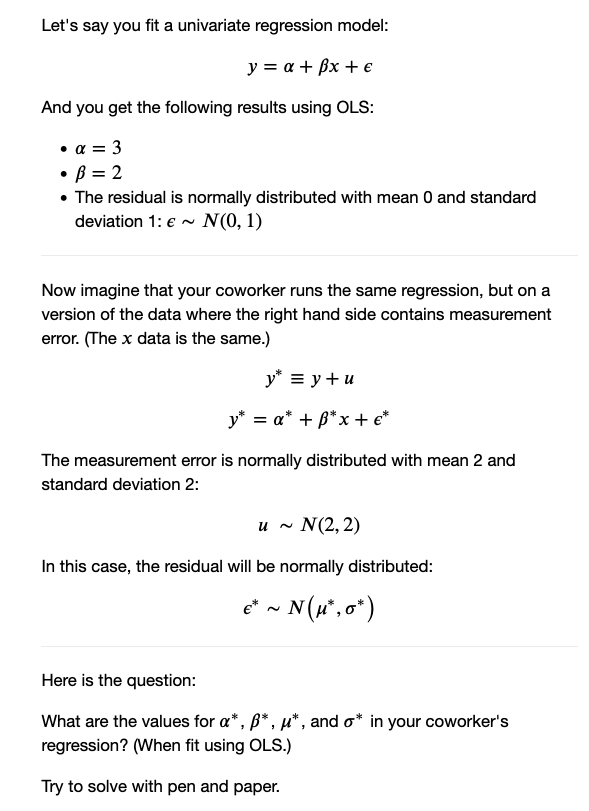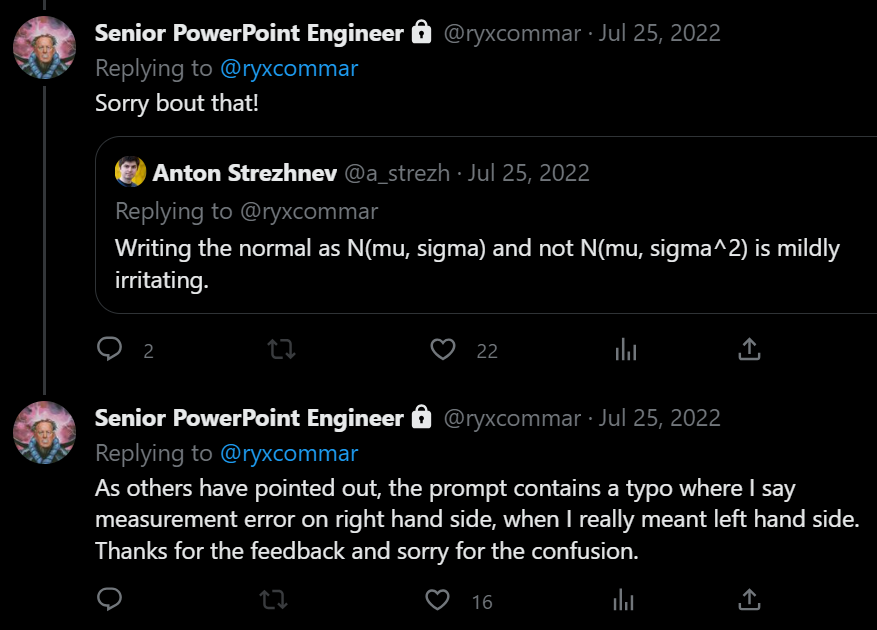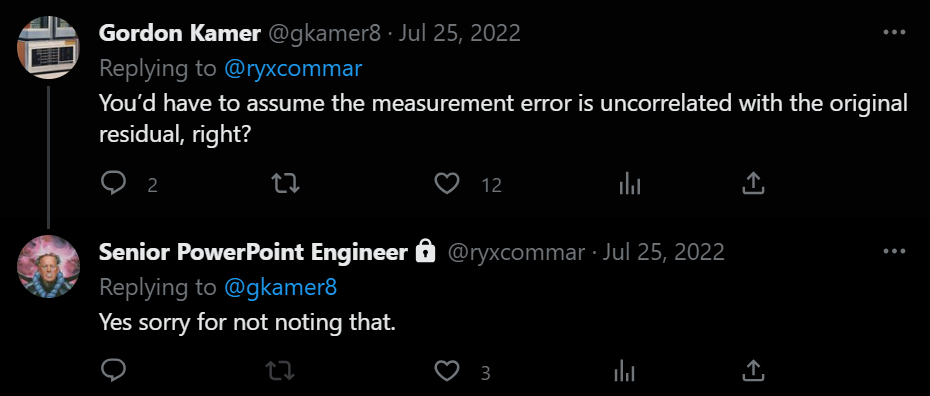2023-07-13
How Measurement Error Affects OLS
this is another data science question I saw on twitter:

with some corrections:


basically we're trying to answer how , , etc changes if errors are added to the values.
note that ryxcommar's notation for normal distribution is instead of . we'll be using this for the answer.
so where is measurement error distributed
since isn't affected by the measurement error, is also unaffected.
which means only affects & .
OLS residuals always have mean , because the constant is carried over to the term. so . and . this is why the second correction is nice to have, so
in conclusion:
Last modified: January 08, 2024. Website built with Franklin.jl and the Julia programming language.